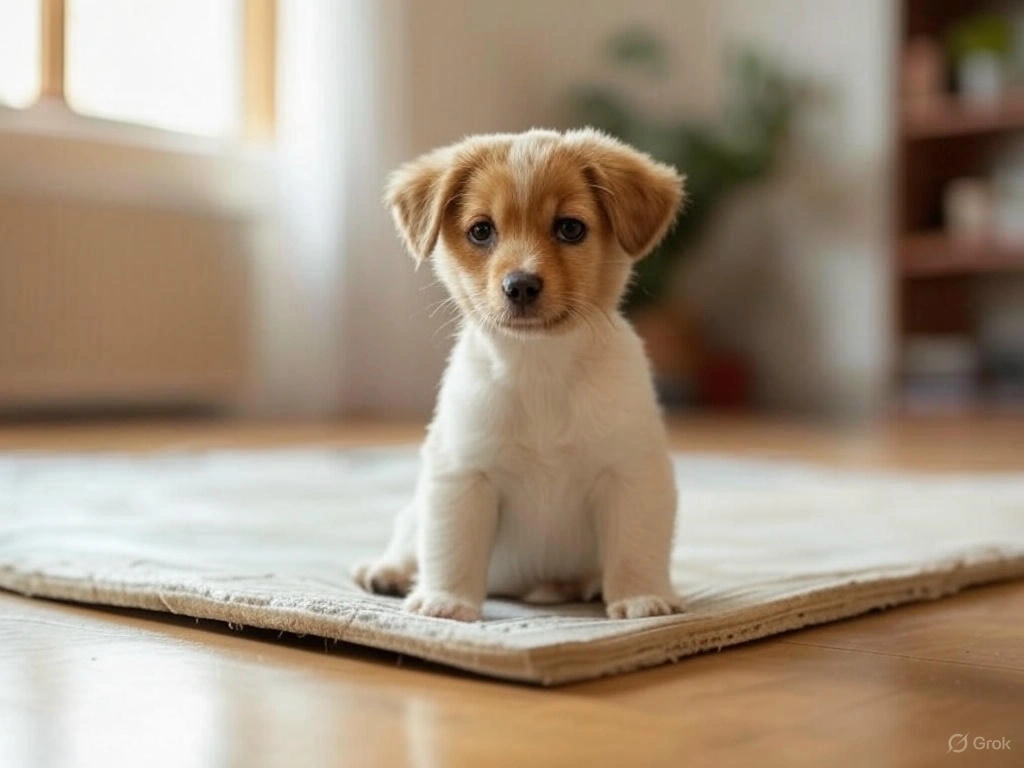DIY Puppy Pads: A Cost-Effective, Eco-Friendly Solution for Pet Training
Create DIY puppy pads for a budget-friendly, eco-conscious way to train your pet while reducing waste and saving money.
Puppy pads are a lifesaver for pet owners, especially when training young puppies, living in apartments, or caring for dogs with incontinence. But store-bought pads can be pricey and create unnecessary waste. The good news? You can make your own puppy pads at home! Whether you’re looking for a quick, budget-friendly option or a durable, reusable solution, this guide has you covered with simple and advanced methods. Let’s dive into how to create effective, eco-friendly puppy pads tailored to your needs.
Why Make Your Own Puppy Pads?
Homemade puppy pads offer several benefits:
- Cost-Effective: Use affordable or upcycled materials like old towels or thrift store finds.
- Eco-Friendly: Reusable pads reduce waste compared to disposable options.
- Customizable: Adjust size, absorbency, and design to suit your pet.
- Training-Friendly: DIY pads can be just as effective as commercial ones with the right materials.
Research shows reusable pads are sustainable, while disposable options can help ease puppies into training. The key is choosing absorbent materials (like towels) and waterproof layers (like shower curtains) for maximum effectiveness. One thing to note: some dogs prefer white pads to avoid mistaking them for rugs, so test your design to ensure your pup adapts.
Method 1: Simple Washable Puppy Pads
Perfect for beginners, this budget-friendly method uses everyday items to create washer-friendly pads in no time.
Materials Needed
- Old Towels: Absorbent top layer; grab them cheap from thrift stores or Dollar Tree.
- Shower Curtain Liner: Waterproof bottom layer; look for machine-washable ones on clearance (often under $1 at Walmart).
- Optional: Vinyl tablecloths (as a waterproof alternative), training aid (like Four Paws), or disposable pads for initial training.
Step-by-Step Instructions
- Lay a towel over the shower curtain liner, smoothing out wrinkles.
- Trace the towel’s outline with a sharpie, then mark lines 1 inch outside for cutting.
- Cut the liner along the outer lines, keeping it slightly larger than the towel.
- If the liner has magnets, cut them out carefully and save for another project.
- Fold the liner’s edges 1 inch over the towel’s edges and stitch around (use a close straight stitch for older machines).
- Wash and dry the pad to test durability—some liners may need air-drying.
- If your pup hesitates, spray with a training aid or place a disposable pad on top for a few days.
- Start with one pad to confirm your pet will use it. Nicer towels can mimic rugs, but non-white pads may confuse some dogs, so monitor their behavior.
Pro Tips
- Use a rinse-only cycle before a full wash to keep pads fresh.
- Ensure all materials are machine-washable for easy maintenance.
- If you prefer a store-bought alternative, adult incontinence pads (like 52″ x 34″ ones on Amazon) work but can get costly.
Method 2: Structured Reusable Puppy Pads with Holder
For a sturdier, leak-proof option, this method creates layered pads and a frame—great for larger dogs or those with incontinence. It requires sewing skills and specific materials but offers long-term durability.
Materials for Pee Pads
- Cotton (with design): 23” square for the top layer.
- Flannel: Two 23” square pieces for absorbency.
- Polyurethane-Coated Nylon: 23” square (150-200 denier, coated side up) for waterproofing.
Materials for Pad Holder
- Vinyl: 43” square (mute grey) and 25” square (green for accent).
- Elastic Cord: 60” for securing the frame.
- PVC/ABS Piping: Four 22” pieces (1” diameter).
- PVC/ABS Elbows: Four (1” diameter).
Steps for Pee Pads
- Cut all layers to 23” x 23” for even stacking.
- Layer in order: cotton, flannel, flannel, nylon. Clip together.
- Sew the border with a Rampart stitch, keeping ¼”–½” padding.
- Trim excess fabric, maintaining padding.
- Use an overcast foot and Rampart stitch for a polished edge (width level 5).
- Wash on a delicate cycle (no bleach) to prep and test.
Steps for Pad Holder
- Connect four 22” pipes with elbows to form a square frame.
- Cut vinyl: 43” x 43” (grey) and 25” x 25” (green).
- Cut 9” flaps on the large vinyl’s corners.
- Center the small vinyl on the large one, fold sides over, and sew flaps with a zig-zag stitch, leaving 1” openings.
- Thread elastic through flaps using a safety pin, creating tension.
- Place the frame on the vinyl, pull elastic to wrap it tightly, knot, and trim excess.
- Insert the pee pad into the frame.
Pro Tips
- Scale up to 28”–35” for larger dogs.
- Add a 22” x 20” clear vinyl sheet above for male dogs to catch splashes.
- Use a disposable pad on top for the first two days to help your dog adjust.
Method 3: Boosting Absorbency
Want pads that rival commercial ones? Enhance absorbency with these community-tested tips, though homemade versions may not fully match store-bought options.
Suggestions
- Diaper Gels: Use thrift store adult diapers for their absorbent gel centers.
- Layered Structure:
- Bottom: Trash bag or $1 shower curtain for waterproofing.
- Middle: Bleachable towels, super-absorbent paper towels (from Walmart’s auto section), or a pinch of water-absorbing plant crystals.
- Top: Gauze or cheesecloth for solid waste and comfort.
- No-Sew Option: Combine flannelette pillowcases, towels, and plastic tarps (Dollar store) for easy washing.
Alternative Washable Design
- Bottom: Waterproof crib mattress pad.
- Middle: Polyester quilt batting for high absorbency.
- Top: Old sheet or fabric, sewn for durability.
Pro Tips
- Laminated polyester (from eBay or Etsy) makes a heat-dryer-safe backing.
- Test absorbency with your pet, as non-white materials may cause confusion.
- For bulk buyers, check dollartree.com for affordable commercial pads.
Key Considerations
- Reusable vs. Disposable: Reusable pads save money and the planet, while disposables aid early training.
- Test First: Wash and dry pads to ensure they hold up. Some materials need air-drying.
- Pet Preferences: Non-white pads may confuse dogs—start with one and use training aids if needed.
- Size Matters: Adjust for larger dogs and add splash guards for males.
Making your own puppy pads is a rewarding way to save money, reduce waste, and customize training tools for your furry friend. Whether you opt for simple towel-and-liner pads, structured framed designs, or super-absorbent layers, these methods cater to all skill levels and budgets. Test your creations, watch your pup’s preferences, and enjoy a cleaner, greener training process!
Have you tried DIY puppy pads before? Share your tips in the comments or let us know which method you’re excited to try!


